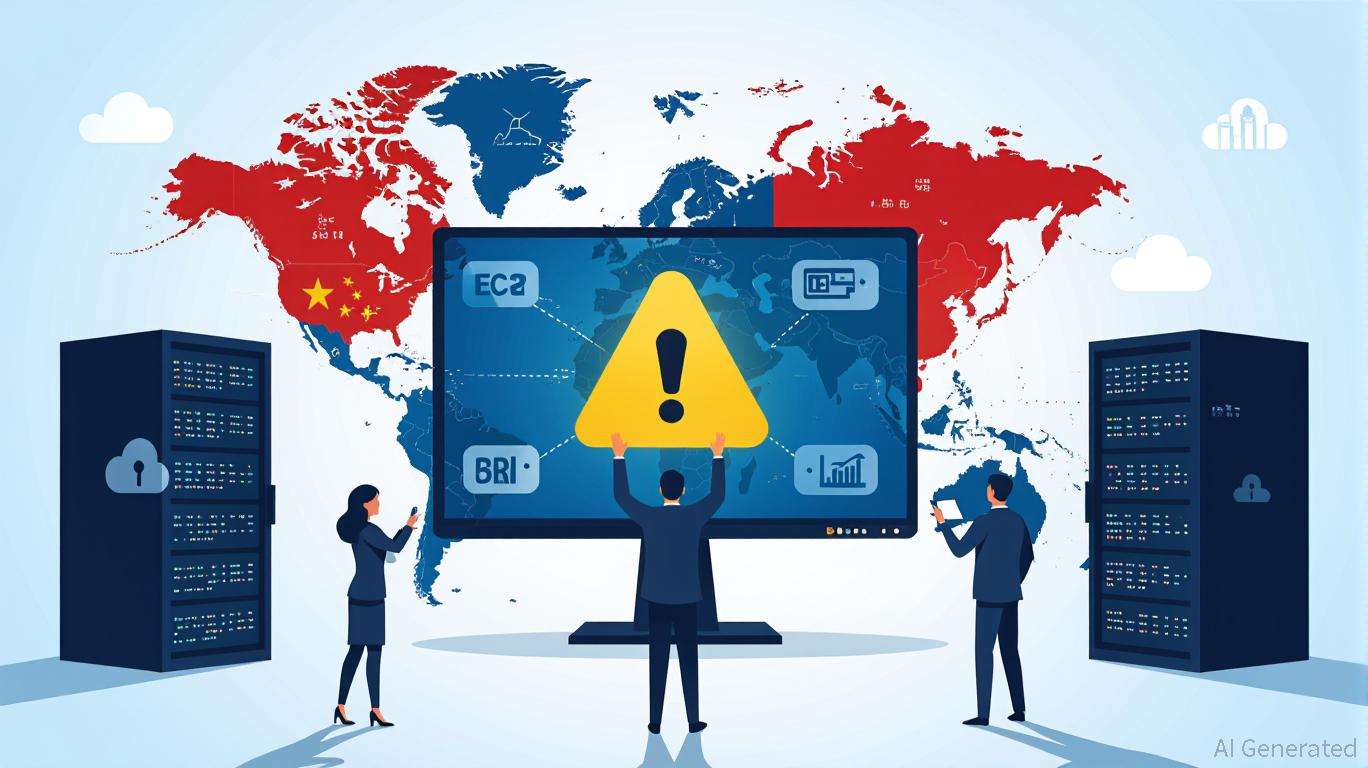The SharePoint Breach and the Fragile Web of Global Tech Alliances

The
SharePoint breach of July 2025 has exposed a critical fault line in the global technology supply chain—one that intertwines technical vulnerabilities, geopolitical rivalries, and the urgent need for reimagining cybersecurity strategies. As attackers exploited zero-day flaws in on-premises SharePoint servers, the incident underscored how supply chain risks are no longer confined to software dependencies but are now weaponized tools in the hands of state-sponsored actors and ransomware syndicates. For investors, this breach is a stark reminder: the cybersecurity sector is evolving into a geopolitical battlefield where tech partnerships, regulatory frameworks, and corporate resilience must align to mitigate cascading risks.The Breach: A Convergence of Exploits and Geopolitics
The SharePoint vulnerabilities—CVE-2025-49704 (remote code execution) and CVE-2025-49706 (spoofing)—were exploited by Chinese-linked groups, including Linen Typhoon, Violet Typhoon, and Storm-2603. These actors, operating with state-level resources, leveraged the flaws to deploy ransomware, steal sensitive machine keys, and establish persistence in compromised networks. The breach's timing and execution reflect a strategic shift: cyber espionage is increasingly merged with financially motivated ransomware operations, blurring the lines between nation-state objectives and cybercrime.
The vulnerabilities targeted legacy on-premises systems, which remain prevalent in critical infrastructure, government agencies, and enterprise environments. Microsoft's delayed patch for SharePoint 2016—a version still in use by many organizations—highlighted the fragility of outdated infrastructure in a world where adversaries exploit technical debt as a strategic asset. The breach also exposed how supply chain risks are no longer isolated to software vendors but extend to the global ecosystem of users, regulators, and threat actors.
Geopolitical Tensions and the Cybersecurity Arms Race
The involvement of China-linked threat actors in the SharePoint breach has intensified U.S.-China cyber tensions. U.S. Treasury Secretary Scott Bessent's planned discussion of the incident at the Stockholm trade talks illustrates how cybersecurity is now a central issue in geopolitical negotiations. The breach has also reignited debates over the security of open-source and proprietary software ecosystems, with policymakers questioning the risks of relying on global supply chains for critical infrastructure.
For cybersecurity firms, this geopolitical friction creates both challenges and opportunities. Companies that provide zero-trust architectures, identity governance, and AI-driven threat detection are now in high demand as organizations seek to decouple from vulnerable legacy systems. The breach has accelerated the adoption of cloud-native security solutions, pushing enterprises to migrate from on-premises tools to platforms that enforce least-privilege access and continuous monitoring.
Market Implications: Winners and Losers in the Zero-Day Era
The SharePoint breach has had immediate financial repercussions. Microsoft's stock dipped 4% in the week following the disclosure, reflecting investor concerns over its delayed patching and reputational damage. Meanwhile, cybersecurity firms with robust AI and endpoint detection capabilities have seen significant gains:
CrowdStrike's Falcon platform, which excels in real-time threat hunting, surged 12% as demand for AI-powered EDR solutions spiked. Similarly, SentinelOne's Singularity AI, designed for rapid zero-day mitigation, saw a 12% increase in valuation. These gains reflect a broader market trend: investors are increasingly favoring companies that offer proactive, AI-driven resilience over traditional perimeter-based security.
Conversely, legacy cybersecurity vendors relying on signature-based detection models are struggling to keep pace. The breach has also amplified demand for identity-centric solutions, with
and seeing renewed interest in their adaptive authentication and secure remote access offerings.Investment Strategy: Navigating the New Cybersecurity Landscape
For investors, the SharePoint breach serves as a case study in the evolving cybersecurity market. Here's how to position a portfolio for the zero-day era:
Prioritize AI-Driven Solutions: Companies like
, , and Darktrace (DRKTF) are leading the charge in AI-powered threat detection. These firms benefit from the growing need to automate response to sophisticated, rapidly evolving threats.Invest in Zero-Trust Frameworks:
(PANW) and (ZS) are at the forefront of zero-trust infrastructure, offering cloud-native solutions that align with the post-breach shift away from on-premises vulnerabilities.Diversify into Identity Governance: Okta (OKTA) and Cloudflare (NET) are critical in an era where compromised credentials and machine keys are primary attack vectors.
Monitor Geopolitical Risk Metrics: The U.S. Cybersecurity and Infrastructure Security Agency (CISA) adding the SharePoint vulnerabilities to its Known Exploited Vulnerabilities (KEV) catalog has created a regulatory tailwind for cybersecurity spending. Investors should track CISA's KEV updates and global cybersecurity regulations as leading indicators of market demand.
Avoid Overreliance on Legacy Vendors: The SharePoint breach exposed the risks of outdated infrastructure. Companies like Microsoft (MSFT) face short-term reputational damage, while legacy cybersecurity firms lacking AI integration may struggle to retain market share.
Conclusion: A Call for Resilience in a Fractured Ecosystem
The SharePoint breach is more than a technical incident—it is a symptom of a fractured global tech ecosystem where geopolitical tensions and supply chain vulnerabilities collide. For investors, the key takeaway is clear: cybersecurity is no longer a back-office concern but a strategic imperative. The winners in this new era will be companies that embrace AI, zero-trust principles, and identity-centric security.
As the world grapples with the fallout of this breach, one truth remains: the cost of inaction far exceeds the cost of innovation. For those who act swiftly, the cybersecurity market offers not just protection but opportunity.

Comments
No comments yet